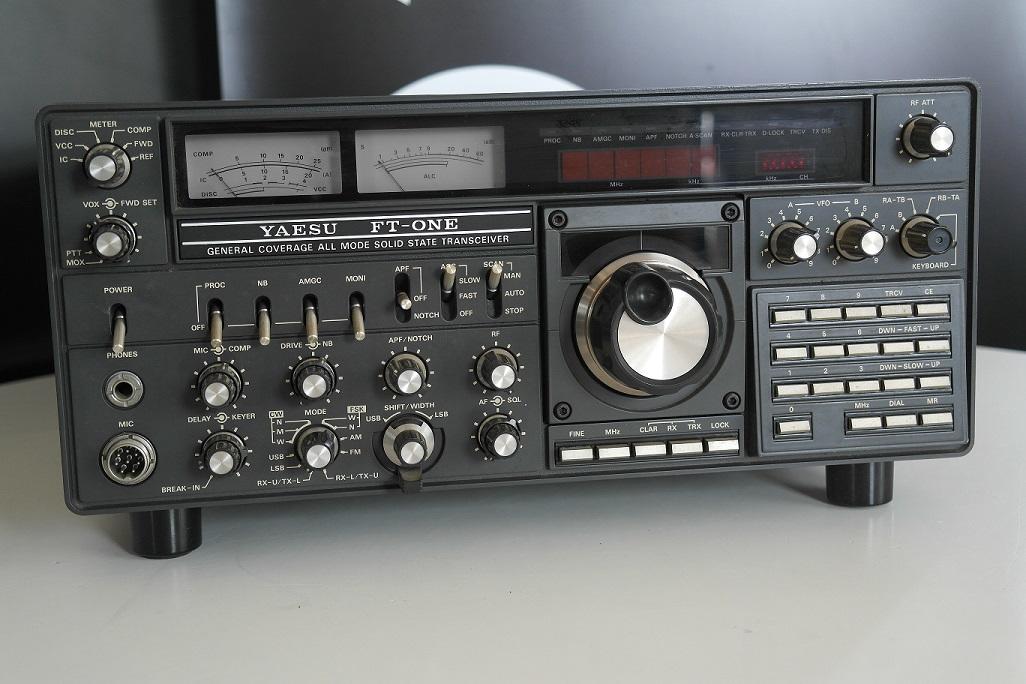
If you’re a radio enthusiast or a ham operator, you’ve probably heard of the Yaesu FT One. This iconic transceiver has been a favorite among amateurs for decades, and for good reason. With its robust construction, advanced features, and exceptional performance, the FT One is a true workhorse that can handle any task you throw at it.
But power is just one aspect of the FT One’s performance. This transceiver also boasts a wide range of features that make it incredibly versatile. From its built-in antenna tuner to its dual VFOs and DSP capabilities, the FT One is packed with tools that allow you to fine-tune your signal and optimize your communication experience.
Another notable feature of the FT One is its durability. Built to withstand the rigors of outdoor use, this transceiver is constructed with high-quality materials that can handle even the harshest conditions. Whether you’re operating in extreme temperatures or challenging environments, you can trust that the FT One will continue to perform reliably.
Overview of Yaesu FT One

The Yaesu FT One is a high-performance amateur radio transceiver that was first introduced in 1980. It quickly gained popularity among radio enthusiasts due to its advanced features and reliable performance. The FT One is a single sideband (SSB) transceiver that operates in the HF frequency range, covering the 160 to 10-meter bands.
One of the standout features of the Yaesu FT One is its robust construction. The radio is built with a sturdy metal chassis, ensuring durability and longevity. It also features a large and easy-to-read display, making it convenient to operate even in low-light conditions.
The FT One offers a wide range of features that make it a versatile and powerful transceiver. It has a built-in antenna tuner, allowing for easy tuning and matching of antennas. The radio also includes a noise blanker and notch filter, which help to reduce unwanted noise and interference during transmissions.
Another notable feature of the FT One is its advanced receiver. It has excellent sensitivity and selectivity, allowing for clear and crisp reception of signals. The receiver also includes an adjustable IF shift, which helps to minimize adjacent channel interference.
In terms of power output, the Yaesu FT One is capable of delivering up to 200 watts of power, making it suitable for long-distance communication. It also has a built-in speech processor, which enhances the clarity and intelligibility of transmitted audio.
Overall, the Yaesu FT One is a reliable and feature-rich transceiver that is highly regarded among amateur radio operators. Its robust construction, advanced features, and excellent performance make it a popular choice for both beginners and experienced users alike.
Features and Specifications of Yaesu FT One

The Yaesu FT One is a high-performance amateur radio transceiver that offers a wide range of features and specifications. Here are some of the key features and specifications of the Yaesu FT One:
- Power Output: The transceiver has a maximum power output of 200 watts, allowing for long-range communication.
- Modes: The Yaesu FT One supports a variety of modes, including SSB, CW, AM, FM, and FSK.
- Receiver: The receiver of the FT One is highly sensitive and has excellent selectivity, allowing for clear reception even in crowded band conditions.
- Memory Channels: The transceiver has a total of 100 memory channels, allowing for easy access to frequently used frequencies.
- Antenna Tuner: The built-in antenna tuner of the FT One ensures optimal antenna matching for efficient transmission.
- Notch Filter: The transceiver features a notch filter that helps to eliminate interfering signals and improve overall reception quality.
- Noise Blanker: The noise blanker function reduces background noise, making it easier to hear weak signals.
- IF Shift: The FT One has an IF shift function that allows for precise tuning and interference rejection.
- Speech Processor: The built-in speech processor enhances voice signals, improving overall audio quality.
- Display: The transceiver features a large, easy-to-read display that provides important information at a glance.
- Size and Weight: The Yaesu FT One is compact and lightweight, making it portable and easy to transport.
Overall, the Yaesu FT One is a versatile and reliable amateur radio transceiver that offers a wide range of features and specifications. Whether you are a beginner or an experienced operator, the FT One is sure to meet your communication needs.
Pros and Cons of Yaesu FT One

Pros:
- The Yaesu FT One offers excellent build quality, ensuring durability and longevity.
- It has a wide frequency range, allowing for versatile communication options.
- The FT One has a powerful transmitter, providing strong and clear signals.
- It offers a variety of advanced features, such as dual VFOs and DSP filtering.
- The radio has a user-friendly interface, making it easy to operate for both beginners and experienced users.
- It has a large and bright display, ensuring easy readability even in low-light conditions.
- The FT One has a robust receiver, allowing for excellent sensitivity and selectivity.
- It offers a wide range of connectivity options, including USB and RS-232 ports.
- The radio supports various operating modes, including AM, FM, SSB, and CW.
- It has a built-in antenna tuner, eliminating the need for external tuners.
Cons:
- The Yaesu FT One is quite expensive compared to other amateur radios on the market.
- It is a large and heavy radio, which may not be suitable for portable or mobile use.
- The FT One lacks some modern features, such as built-in digital modes or Bluetooth connectivity.
- It requires a separate power supply, as it does not have an internal battery option.
- The radio’s menu system can be complex and overwhelming for beginners.
- It may not be compatible with all accessories and antennas available on the market.
- The FT One may require firmware updates or modifications for optimal performance.
- It has a limited warranty period, which may be a concern for some users.
- The radio’s user manual may not provide sufficient information for troubleshooting or advanced operations.
- It may not be readily available in all regions, making it difficult to purchase or obtain support.

Over the years, I have amassed a wealth of experience and knowledge, which I eagerly share with fellow radio aficionados. Through my writing and active participation in the amateur radio community, I strive to inspire others and provide valuable insights into this fascinating hobby. Engaging in various radio activities, I continue to learn and grow, constantly amazed by the endless possibilities that radio communication offers.

